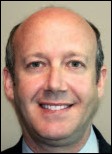Readers Write: Connecting the Industry: Behind the Scenes of the New Healthcare Triangle
Connecting the industry: Behind the Scenes of the New Healthcare Triangle
By Gary Palgon
The days of patients accepting the decisions and information provided by their physicians – no questions asked – are in the past. Today, patients are in the driver’s seat, participating in discussions about their care and making crucial decisions based on information from all members of their care teams. The movement from a linear form of communication between a single physician and a patient has changed into a multi-dimensional conversation that includes a variety of healthcare providers and patients.
Patients have always trusted physicians to provide the best care for them as individuals. Yet few realize until they become ill that historically there has been little exchange of information between all points of care. A patient who first visits an urgent care center, for example, then sees a primary care physician who refers him or her to a surgeon expects their health information to follow from place to place.
Fortunately, technology now supports the exchange of health information among disparate sources so that a patient’s longitudinal record is accessible. This not only prevents the need for the patient to repeat information at each point of care, it also ensures the accuracy of the information on which all of the providers base their treatment recommendations.
Better exchange of health information among providers and patients has led to a more collaborative approach to developing the best possible treatment plans. While providers and patients make up two important points in the communications continuum, however, there is a third important point in the healthcare communications triangle that must not be overlooked – pharmaceutical organizations.
Access to the most current medications and treatment protocols requires an exchange of information among patients, physicians, and pharmaceutical organizations. Searches for clinical trial information can be initiated by patients or physicians, as each seeks the best care for a specific condition.
Nevertheless, patients expect physicians to have greater access to clinical trial information, as well as the ability to qualify them for participation in trials. This increased awareness of the benefits of clinical trials brings the healthcare industry face to face with a longstanding challenge: how to give pharmaceutical companies access to patient information for research while still respecting patient privacy where desired.
Concern about patients’ privacy and the security of their data has for many years limited healthcare providers’ willingness to share information, resulting in limited access to it for researchers. Yet de-identified patient information can be tremendously beneficial, helping shorten research timeframes and speeding time-to-market for new treatments. Today, many patients not only understand the importance of their medical data to research, they also want to share it with the general population as a way to help improve care for others suffering with similar conditions. It is, after all, their information to be used as they wish, which includes individuals using such data for future treatment of diseases.
The technology to connect all points of the healthcare continuum is available today. Although not perfect – industry standards are still evolving and interoperability challenges do exist – successful connections being made every day prove that the challenges can be overcome.
Take lab and diagnostic results, for instance. With lab results comprising roughly 70 percent of an average patient record, the ability to see and share lab data electronically greatly improves communication across the continuum of care. Physicians rarely have a laboratory in their own offices, so they rely on technology to share data outside their four walls. The connections among physicians and multiple laboratories or diagnostic services provide a real-life example of the benefits and possibilities of secure data exchange.
A truly connected healthcare industry can be accomplished if the strategy to achieve it is simple, cost-effective and beneficial to everyone. Technology that incorporates use of the cloud to integrate disparate systems, aggregate and harmonize data, and provide access in usable formats addresses these requirements. Not only does this strategy overcome the financial and staffing challenges of industry integration, but it provides enhanced security for health information.
Even though patients are willing to share their health information for research purposes, protocols that authenticate user identities and provide secure access for specific research needs still must be put into place to protect it. Leveraging cloud-based solutions is one way to provide those securities while enabling access to data for multiple researchers working on different studies at the same time.
Easy access to information is part of day-to-day life in the 21st century. In years past, you might have to ask the advice of the local hardware store owner or look through a book if you wanted to fix a leaky sink. Today, a simple Internet search provides hundreds of suggestions and videos showing exactly what to do.
The same concept – easy access to data in a usable format for everyone – applies to the exchange of health information among patients, providers, and pharmaceutical organizations. The benefits include improved clinical trials, appropriate research, faster time to market for beneficial new drugs, and ultimately enhanced population health management.
Just as access to information improves our daily lives, so it does too for patients, researchers, and providers. It is a win-win-win situation for those who rely on shared information to develop new treatments, assess care options, and make the best care choices possible.
Gary Palgon is vice president of healthcare solutions for Liaison Healthcare Informatics.



Hard agree, and not just because I'm a spreadsheet nerd. Why are we all here? Isn't it in the service…